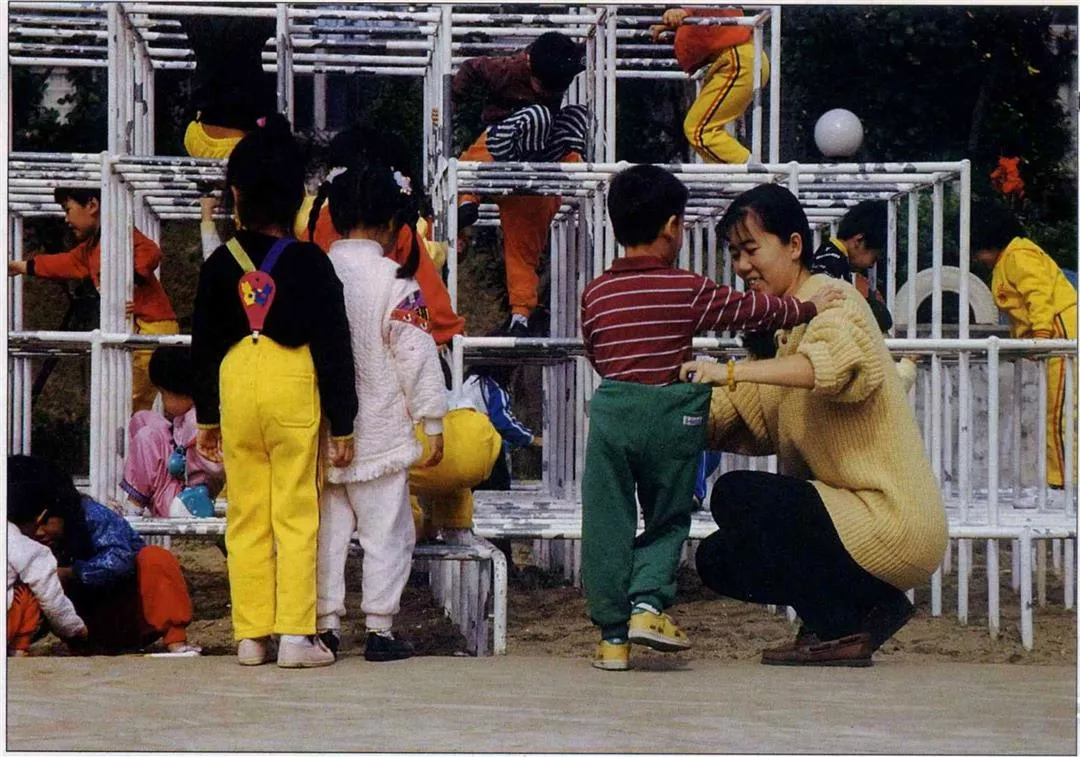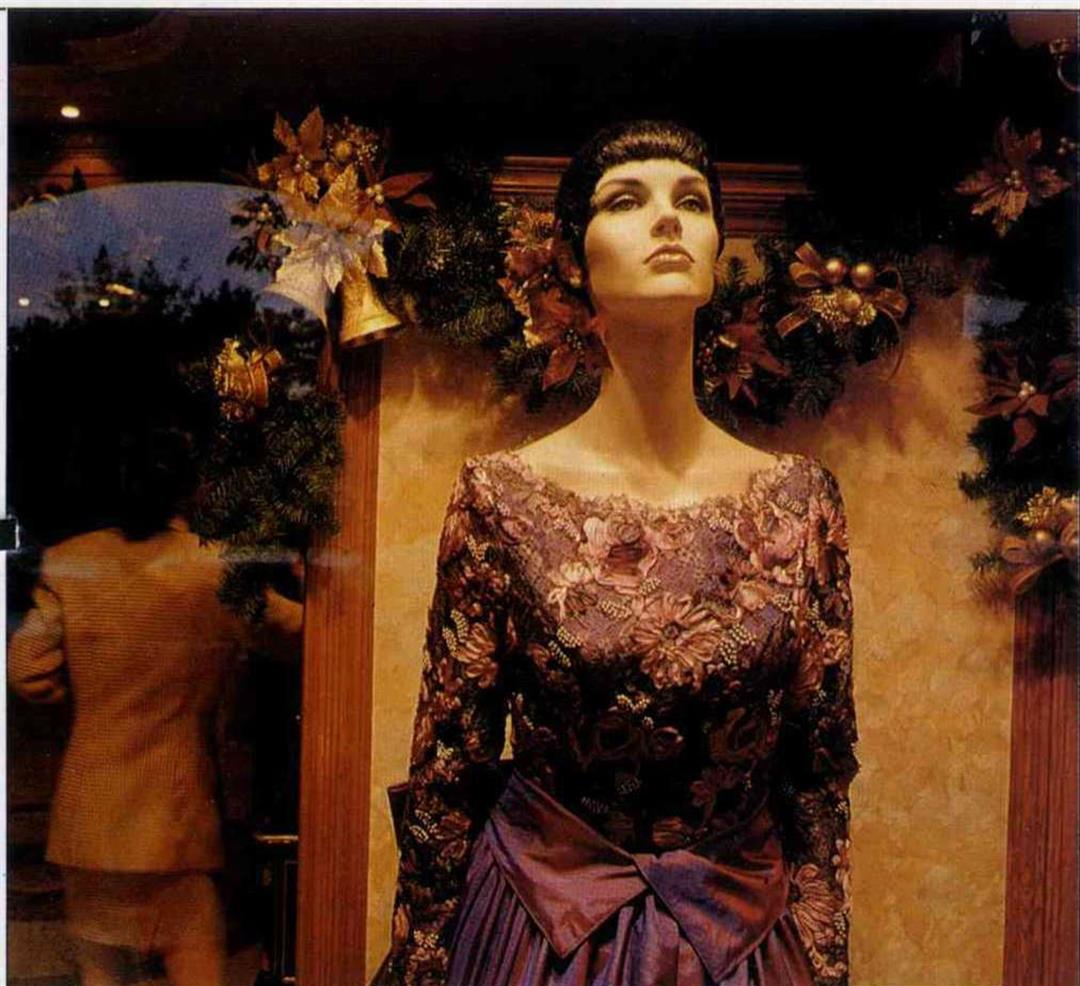September, 1991. The International House on Hsin Yi Road is holding a book fair.
As soon as Wang Bing-jyun, who is 35 years old and just returned from the United States, enters the fair, he sees a huge pile of books about baby care. On the same shelf are other books about such topics as how young parents should care for their children and how to find a good baby sitter.
"Comparatively speaking, today's book fairs are a lot different from the ones held before," says Wang Bing-jyun, who left the country for six years. Fifteen or 16 years ago, when he was still in college, typical books to be found in book fairs were such weighty tomes as Wuthering Heights, Crime and Punishment or Tu Wei-ming's translation of Western Civilization aimed purely at the student consumer. Today such non-intellectual books as those about how to manage one's household or money have become the staple for these fairs.
"I feel like I'm being cared for," says Wang, already married and a father. His feelings are quite possibly a portrayal of the current group of Taiwanese in the prime of their life.
Taiwan Didn't Have a Baby Boom? Whether in the East or in the West, the generation born after the war is the leading force in contemporary society.
"The baby boom" is a term used in the West to describe the large group of people born after World War Ⅱ. It refers to those born when soldiers returning from the war married and then did their best to make up for the loss in population caused by the war. Because the growth was fast and great, it has been called "the baby boom." Take the United States as an example: from 1946 to 1964--a short span of just 18 years--a total of 78 million people were born, constituting a third of the American population and the largest bulge in the population profile.
What's the situation like in Taiwan?
Chen Kuan-cheng of the Sun Yat-sen Institute for Social Sciences & Philosophy of the Academica Sinica says that strictly speaking it appears as if Taiwan does not have a baby boomer generation as defined in the West.
Whereas the baby boom in the West was a result of an increasing birth rate, in Taiwan, because of medical progress and the development of new agricultural techniques, life expectancy has increased and the population has continually grown since 1920. From 1947 to 1967, Taiwan did indeed have a "period of peak population growth," in which 6.6 million people were born. Those born in that period--those about 25 to 45, who can be said to be in "the prime of their life"--are commonly called the "post-war generation" and constitute 32 percent of the population, more than the generation before or after them.
From Lassie to The Cosby Show: In looking back on history from the standpoint of the early 90s, this largest-ever, post-war generation has played a leading role in shaping cultural, economic and social movements.
For example, the huge population of babyboomers in the United States in the fifties and sixties flooded into the schools, resulting in a tremendous shortage of teachers and facilities. In the 80s, when they were marrying and having children, this greater number of households created a tremendous rise in the demand for housing so that housing costs generally rose.
This group has also caused the appearance and growth in popularity of a number of industries. For example, familiar baby products such as Johnson's baby soap, shampoo and oil all took off in the 1960s when the baby boomers were just cutting their baby teeth. By the 1980's this generation had already grown up, and this market turned its focus to adults. The targets of Johnson and Johnson's ads are no longer only children--"It's good for grownups too."
And take the directions of broadcast media. In the 50s and 60s, with the stage of development of the baby boom generation, serials such as lassie were all the rage. Now the boomers have had children themselves, and shows and films about raising children or family life, such as The Cosby Show and Home Alone are what are in.
Making Its Mark on Society: According to the analysis Ramon J. Aldag and Tymoth M. Stern have made in their book Management, as the baby boom generation has grown up, American business has moved accordingly. In the 1960s products and toys had sensational growth; in the 70s wedding-related catering and markets relating to starting a family, such as the real estate market, took off; in the 80s the health and travel industries did well; and in the 90s, the two predict that the medicine and the personal services industries will have their turn. The only big product that hasn't been a result of the baby boomers is the computer.
What about Taiwan? In comparison with the United States, we are a society that has changed relatively more dramatically. Since retrocession, economic growth pulled by the locomotive of exports, universal education and the transformation of social and family structures have all caused a tremendous change in Taiwan's industry. Relatively speaking. The populous generation born after the war did not have the obvious impact it did in America.
Nevertheless, there are still traces of the relationship between the post-war generation and the rise and fall of products and businesses.
In June of 1987 the Chinese Productivity Center did a study on consumption over the previous 35 years. In 1973, Les Enphants, a store selling products aimed at children, was established. In 1976 to 1979, there was a hot market for Adidas shoes, and video games appeared on the scene. In 1981, disposable diapers started to sell well.
In 1982 the Kingstone Bookstore chain appeared, karaoke gained in popularity, and fitness clubs, diet centers and health drinks all hit the market. In 1983, video rental stores were all the rage; in 1986, MTVs made their appearance and in 1987 the National Theater and Concert Hall at the Chang Kai-shek Memorial were opened.
From Little League to Professionals: Wang Bing-jyun, an associate professor at the Graduate School of Business Administration at National Cheng-chi University, holds that in addition to these businesses, baseball is a clear example of something in Taiwan that has grown in step with the post-war generation.
People who are now about 30 can remember getting up in the middle of the night in 1969 to listen to the Chinlong little league team's struggle to win the little league world series in the United States. As this group of people has grown up, baseball has grown from little league to teenage baseball to youth baseball to the professional baseball league of today.
This group of post-war children began going to school in the 1960s, and there was not enough time to supplement such educational resources as schools and classrooms, which were strained to their bursting point.
"I remember that when I was in elementary school there were 72 of us squeezed into one classroom. At that time the elementary school had a student body of 20,000, which was called the world's largest," recalls Chen Pi-chiang, a 36-year-old manager of a foreign company.
The over ten-year rise of the publishing industry is also connected to the needs of the post-war generation as it matures. Chan Hong-chih, the author of Urban Observations, points out that vast majority of the post-war generation have been educated and that those born after 1956 were in school for at least 9 years. The illiteracy rate has plunged. Most of these people have retained a capacity and demand for reading books after they have gone out in the world and they will take the initiative to go out and buy a couple of books. The post-war generation's entering the work force is the cause of the abrupt rise of the number of books on business administration and financial management sold in the past several years.
Little Girls Have Grown Up: That sanitary napkins and stockings started growing rapidly in popularity in Taiwan in the 1970s is closely connected to growing up of female baby boomers. Lin Ching-hsueh, vice general manager of the S.K. Corp., Taiwan's first domestic sanitary napkin company, points out that only five years after the company introduced sanitary napkins in 1976, some 60 or 70 percent of all women were using them. Currently the markets for sanitary napkins and stockings are saturated, and growth in sales is extremely difficult.
Furthermore Lin Chung-cheng, chairman of the department of economics at National Central University, points out that while the frenzied growth in real estate values in the 1980's was in part related to such factors as great accumulations of idle capital, the urbanization of Taiwan and the trend toward smaller households, baby boomers leaving the nest is also a cause that should not be overlooked.
Wedding photography is another example. In the 1980s, companies such as Chungshih, Sesame and Harvard providing comprehensive wedding services for clothing, bouquets, make up, wedding photography, etc. made a splash in the market. Today these "photo studios" already constitute something unique to Taiwan, and they came into vogue when those of the post-war generation were tying the knot.
The growth of products for children has also occurred during this same ten-year period. Because the post-war generation has started to have children while both parents have continued to work outside of the home, higher incomes combined with smaller families have given parents greater capacity to spend money on each child, and hence the market for baby products--of which disposable diapers are just one example--has developed. Chen Fang-chen, marketing and research manager of the Hehsin Broadcast Group, points out that whereas disposable diapers first started to be marketed in about 1970, they didn't really start to take off until about 1987. Now they already account for 90 percent of the market.
Specially Cared For by the Market: Simon Koh, who has researched market movements deeply as the manager of the Media and Marketing Information Research Center for the Oglivy and Mather advertising agency, holds that baby and child products are going to be developed in two directions -- necessities and luxuries. Demand for necessities such as food and clothes declines as the number of children decline, whereas the demand for luxury products for children increases as their numbers decline. Hence this represents an area worth developing.
And the post-war generation, with its ever greater economic clout, has not overlooked itself.
Chen Fang-chen points out that the popularity of tennis and golf equipment, name brand sporting wear, and vegetarian and health foods is in large part related to this large group of people approaching middle age and beginning to take care of their bodies.
What's in store for the future? As this post-war generation matures, they will, not so long after making families, start approaching old age. More than a few insurance companies have taken age-related insurance as their focus, helping the post-war generation start preparing for the future.
From infancy to old age, the post-war generation is a group that has been and will be specially taken care of by the market.
[Picture Caption]
Disposable diapers, baby food, stockings, sanitary napkins . . . these products of grown-up baby boomers are all hot sellers.
Because the post-war generation emphasizes the education and development of their children, children's products will face ever greater demands for quality.
The wedding photo industry, which has a unique character in Taiwan, is an industry that has grown up with the post-war generation.

Because the post-war generation emphasizes the education and development of their children, children's products will face ever greater demands for quality.

The wedding photo industry, which has a unique character in Taiwan, is an industry that has grown up with the post-war generation.